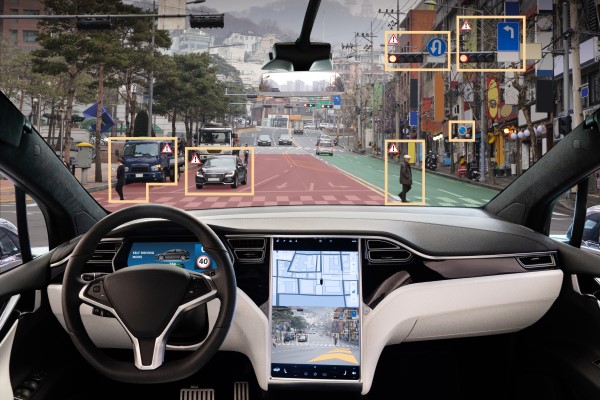As we stand on the cusp of the Fourth Industrial Revolution, the integration of embedded vision systems and artificial intelligence (AI) is poised to unleash a wave of disruption that will revolutionise industries as diverse as healthcare, manufacturing, transportation, and retail.
With the ability to process massive amounts of data in real time and make complex decisions with astonishing speed and accuracy, these technologies have the potential to transform the way businesses operate, optimise supply chains, enhance product quality, and deliver unparalleled customer experiences. As we look to the future, it is clear that those companies that are able to harness the power of embedded vision systems and AI will be the ones that thrive in an increasingly competitive and dynamic marketplace.
The application of embedded vision systems and AI has extended beyond their traditional use cases, spurring new and innovative solutions across industries. For instance, the use of AI-powered chatbots has significantly improved customer service, providing 24/7 support and reducing response times. Additionally, AI algorithms have been used to predict and prevent equipment failure in manufacturing, reducing downtime and improving overall efficiency. In the healthcare industry, embedded vision systems and AI have enabled the development of precision medicine, allowing for accurate diagnoses and targeted treatment plans.
Furthermore, the convergence of these technologies has also facilitated the development of new forms of human-machine interaction, such as gesture recognition and voice-controlled interfaces. These innovations have led to the creation of more intuitive and seamless user experiences in areas such as gaming, virtual reality, and augmented reality. The widespread adoption of embedded vision systems and AI has also resulted in a growing demand for skilled professionals capable of designing, developing, and implementing these solutions. As such, academic institutions and training programmes are increasingly offering courses and degrees focused on these technologies, providing the necessary skills for individuals seeking careers in these areas.
Together, embedded vision systems and AI have the potential to revolutionise industries in the coming future. Some of the industries that are set to benefit from this technological convergence are discussed here.
Autonomous vehicles
The automotive industry is a hotbed of innovation, and the integration of embedded vision systems and AI represents a significant leap forward in this industry's technological capabilities. One of the most compelling examples of this integration is in the development of autonomous vehicles, which are poised to revolutionise transportation as we know it. Embedded vision systems, comprising cameras, lidar, and other sensors, capture visual data in real-time, which is then transmitted to AI algorithms that analyse the information and make decisions based on predefined parameters.

AI-powered embedded vision systems comprising cameras, lidar, and other sensors have enabled the development of autonomous vehicles (Image: Shutterstock/Scharfsinn)
In addition to revolutionising consumer transportation, autonomous vehicles will undoubtedly also be a game-changer for the logistics industry, where they are already being deployed to pick and transport packages in warehouses.
Healthcare
The healthcare industry also stands to benefit greatly from the integration of embedded vision systems and AI, as it promises to transform the field of medical imaging and diagnosis. The ability of embedded vision systems to capture high-resolution images of internal organs and tissues has already shown promise in detecting and diagnosing health issues. However, the true potential of this technology lies in AI's ability to analyse these images and identify patterns that may not be visible to the human eye. By leveraging machine learning algorithms, medical professionals can achieve faster and more accurate diagnoses, leading to better patient outcomes. This technology could also lead to reduced costs by minimising the need for additional tests and consultations.
With the integration of embedded vision systems and AI, the healthcare industry has the potential to revolutionise the way medical diagnoses are made, paving the way for more efficient and effective healthcare solutions.
Sport broadcasting
Sports broadcasting is another industry poised for significant transformation with the integration of embedded vision systems and AI. With the help of AI, sports broadcasters can enhance the viewing experience of their audiences by providing them with real-time statistics, player tracking, and other vital information during live matches. Embedded vision systems can capture and process high-definition images of sports events, and AI algorithms can analyse this data to provide viewers with unique insights into the game, such as player heat maps, ball speed and trajectory, and other performance metrics.

Embedded vision can capture and process high-definition images of sports events to provide unique insights for viewers (Image: Shutterstock/Zoom Team)
This data can be used by coaches and analysts to make critical decisions, while sports broadcasters can use it to create more engaging and informative content for their viewers. With the integration of embedded vision systems and AI, the sports broadcasting industry is set to undergo a significant transformation, providing viewers with a more immersive and insightful experience.
Retail
The retail industry holds immense potential for significant advancement through the integration of embedded vision systems and AI, which could revolutionise the shopping experience for customers and improve business outcomes for retailers.
One of the most revolutionary and innovative applications of these technologies is the concept of autonomous shopping, which entails a comprehensive network of high-tech cameras, state-of-the-art sensors, and AI-powered algorithms automating the entire shopping experience. This cutting-edge approach provides customers with the ability to simply walk into a store, select the items they desire, and exit without the need for interaction with a cashier or checkout system. Essential to this process, embedded vision systems enable instantaneous object detection and recognition, facilitating the AI algorithms' identification of products while simultaneously tracking their placement into the customer's cart. Furthermore, data gathered through these systems is instrumental in supporting retailers to optimise their inventory management, streamline store layout, and enhance overall customer experience.

A comprehensive network of high-tech cameras, state-of-the-art sensors, and AI-powered algorithms can be used to automate the entire shopping experience, such as in Amazon’s Go stores (Image: Shutterstock/Shachima)
In addition, AI-powered recommendation engines, which analyse customer data to provide personalised product recommendations, represent a major advancement in the field of customer engagement. The amalgamation of embedded vision systems and AI therefore has great potential to revolutionise the retail industry, dramatically transforming the way we approach the shopping experience as a whole.
Conclusion
The convergence of embedded vision systems and AI has tremendous implications for a wide range of industries, with there being great promise for the transformative potential of these technologies. The progress shared here that has been made thus far in the automotive, healthcare, sports broadcasting and retail industries underscores the potential of this technology to improve efficiency, reduce costs, and enhance productivity. Nevertheless, it is important to address challenges such as privacy concerns and the ethical development of AI to ensure that these technologies are used responsibly and sustainably.
As industry experts continue to explore the possibilities of embedded vision systems and AI, it is clear that this technology will continue to shape and transform industries in the years to come.


